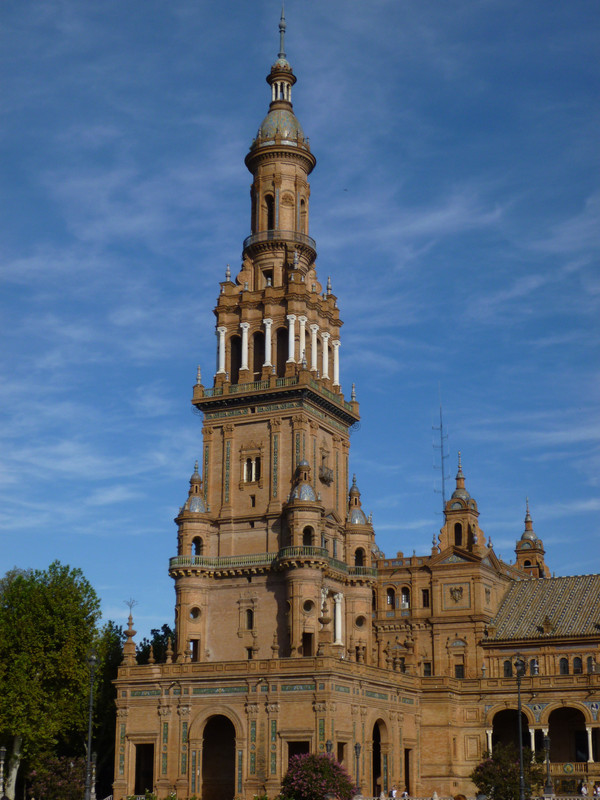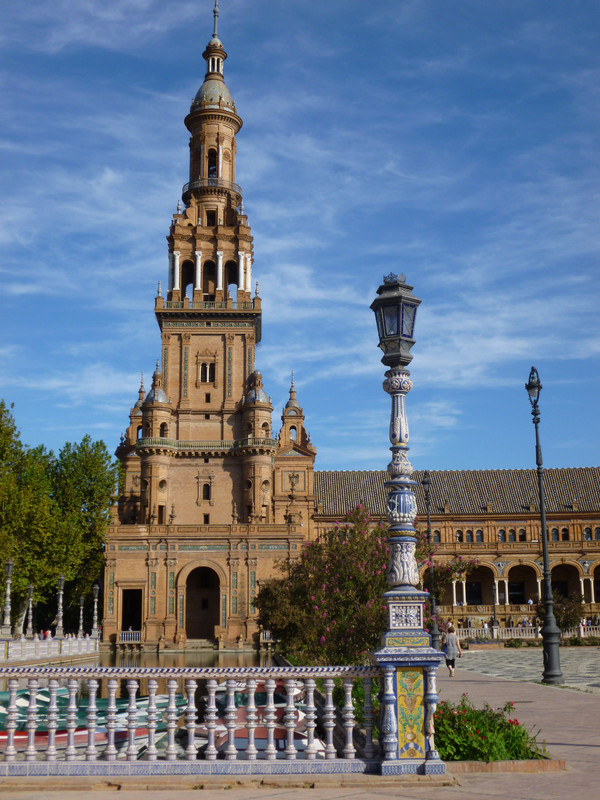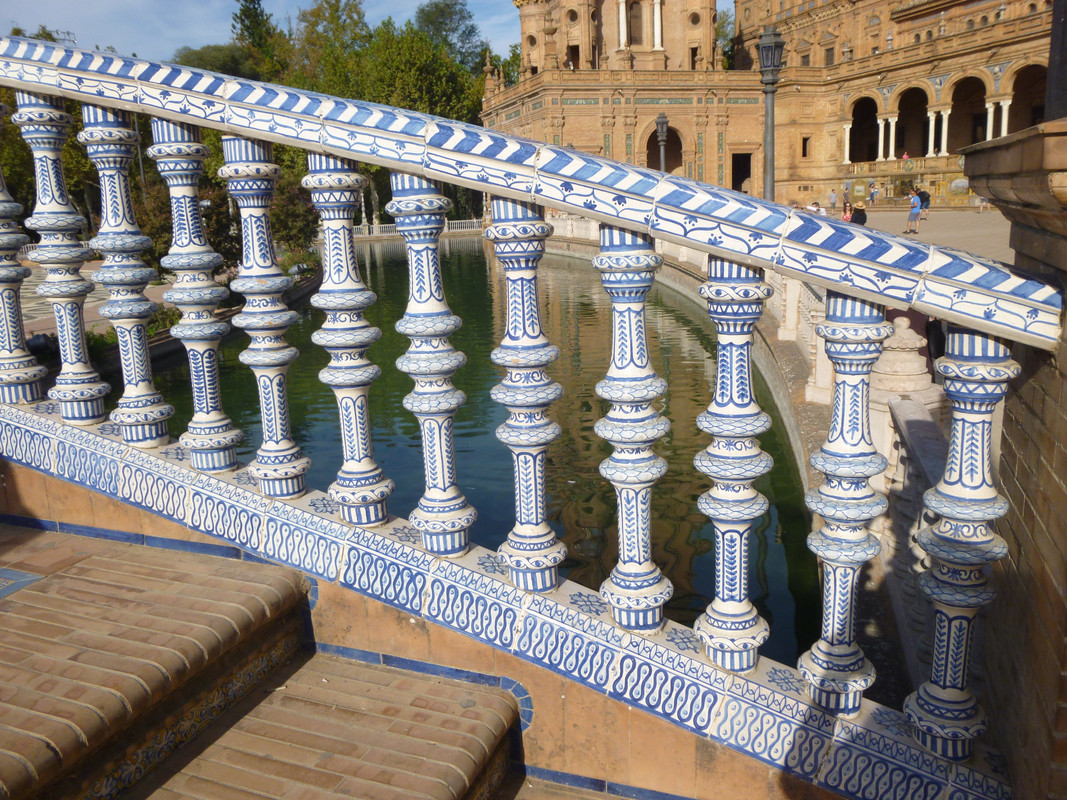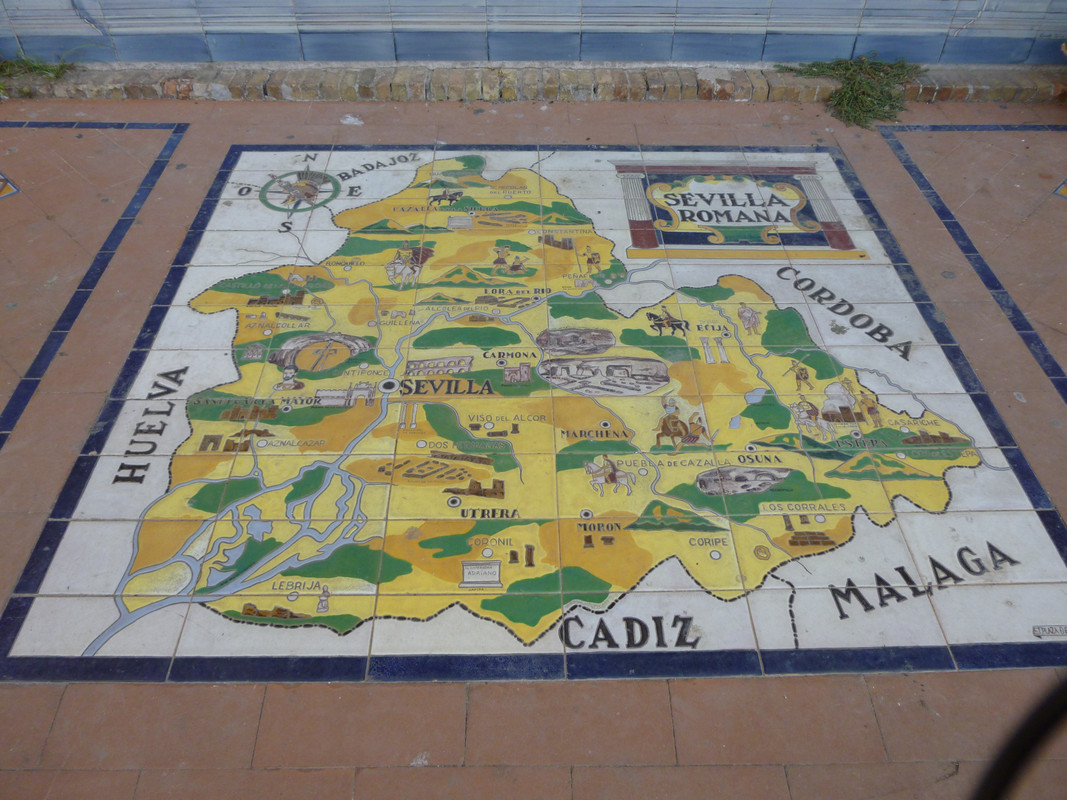
From the hotel in Seville, our coach went along the road of buildings built for the 1929 Ibero-American Exposition and then onto the Plaza de España.
I would have liked to have spent more time here.
It was fascinating building/monument (more information here – https://en.wikipedia.org/wiki/Plaza_de_Espa%C3%B1a,_Seville or here https://www.andalucia.com/cities/seville/plazadeespana.htm).

What the tile map doesn’t convey, because it can’t, is the curve of building, and the intricacies of its decoration.
The two towers at the ends face each other and the building surrounds the plaza.
The remaining photos are close ups of some of the decorative tiling
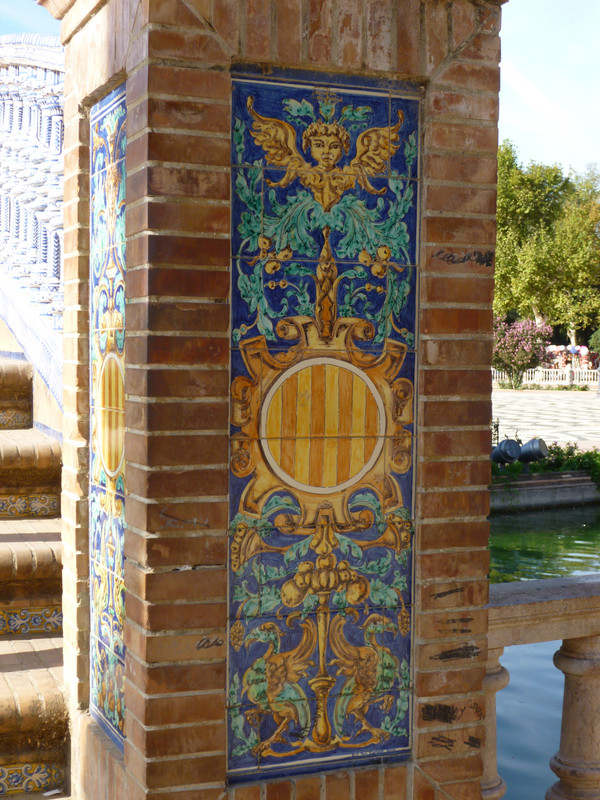

The building was designed by Aníbal González, and
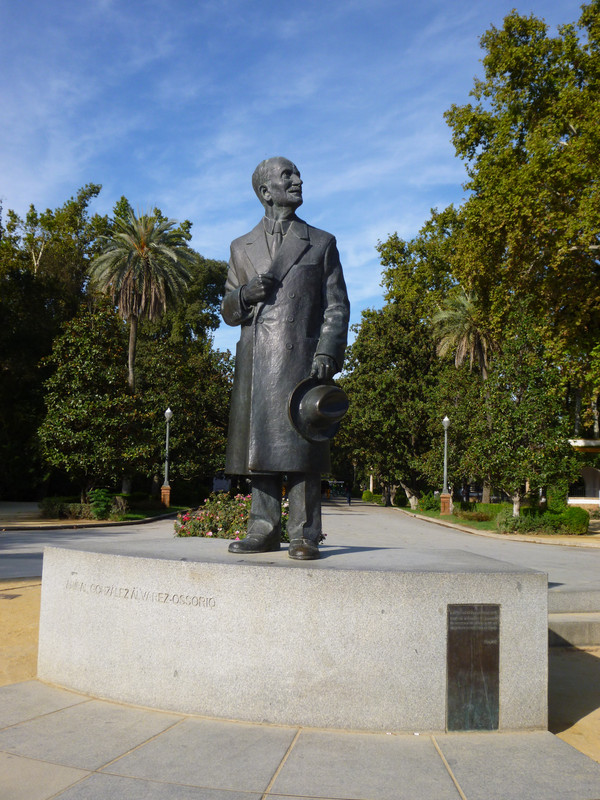
in 2011, probably commemorating the restoration. (The restoration work is excellent)
As the Andalusian tourism board website suggests, I did take a photo of the Seville alcove, which is where the photo at the start comes from.
We had to rush, because we had to walk from the Plaza de España to the Alcazar so we were there for our tickets slot.
